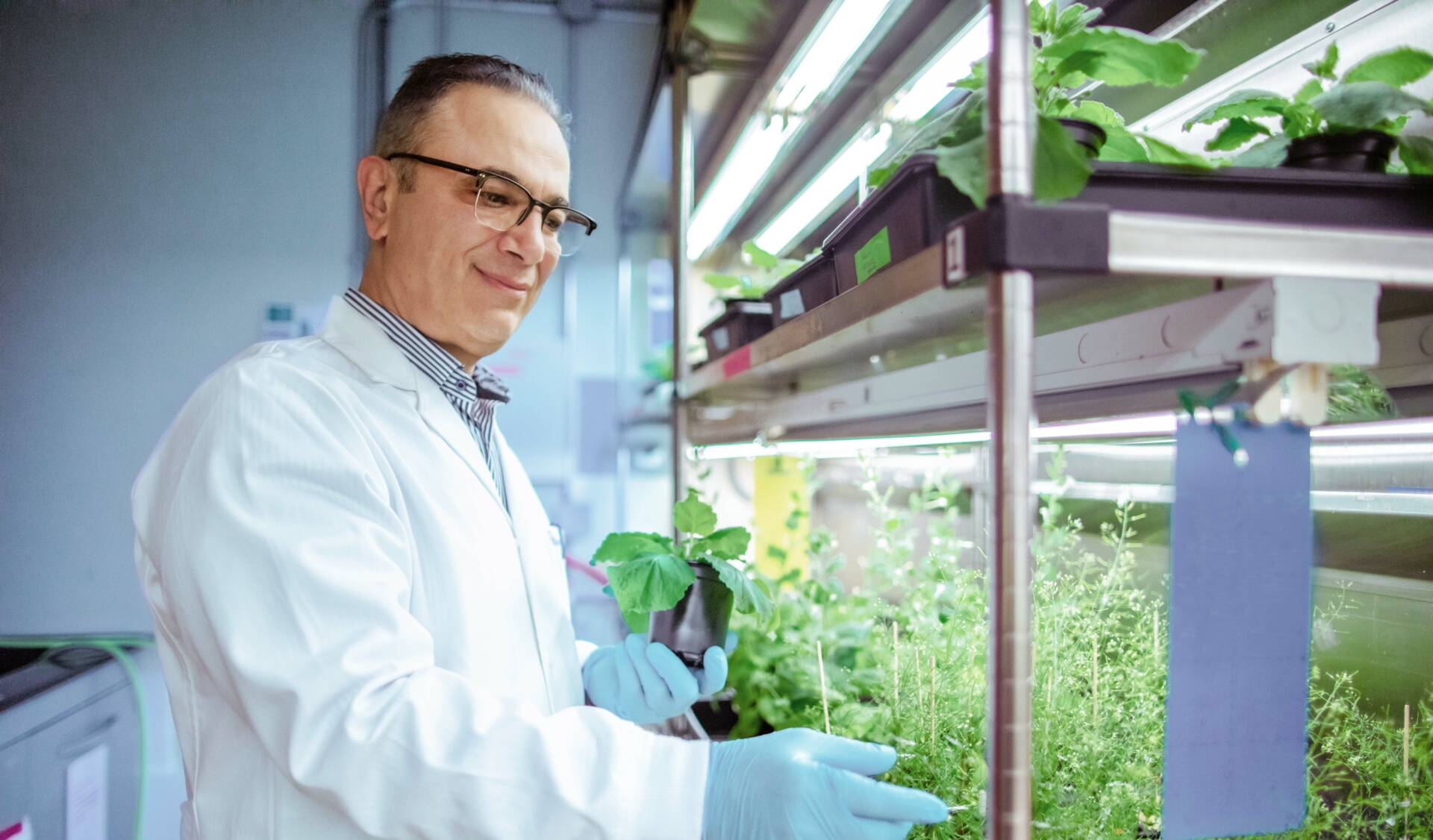Research that spans fundamental discoveries to their application in farmers’ fields has been a trademark of the career of plant scientist Salim Al-Babili.
“Throughout my career I have tried to combine basic research with applied science. I worked for many years on improving the nutritional value of crops, particularly on biofortifying rice with provitamin A. Then I moved toward metabolic pathways related to hormone biosynthesis in plants,” he reflects.
Throughout, a common theme of Al-Babili’s research is to generate crops with improved agricultural performance and enhanced nutritional value. His current work ranges from pursuing basic discoveries on the genetics and hormone signaling of pearl millet in the lab to applying these discoveries directly to farmers’ fields.
“From pursuing basic discoveries on the genetics and hormone signaling of pearl millet in the lab to applying these discoveries directly to farmers’ fields.”
In 2018, Al-Babili and his team, including several international partners, received a US$5 million grant from the Bill & Melinda Gates Foundation to develop hormone-based strategies to combat the invasive spread of purple witchweed (Striga hermonthica). This invasive parasitic plant infests cereal crops in sub-Saharan Africa causing annual losses exceeding US$7 billion and endangering the livelihoods and food supplies of an estimated 300 million people.
Since receiving the grant, Al-Babili has focused on the molecular infrastructure for improving the performance of pearl millet and expanding methods to protect it from Striga infestation. Pearl millet is a resilient plant grown in warm dry zones and a strategic crop for Saudi Arabia.
The project spans the whole R&D process; from work in the lab, to small greenhouse and mini-field experiments, to larger trials in fields of smallholder farmers.
Host cereal plants, like pearl millet, release plant hormones, called strigalactones, into the soil. Striga seeds sense this hormone, which then triggers them to germinate. Striga weeds survive by siphoning off water and nutrients from the host crop for their own growth. Al-Babili’s work on striglactone biosynthesis has led to a number of control strategies to reduce Striga seedbank in the soil.
“Work on striglactone biosynthesis has led to a number of control strategies to reduce Striga seedbank in the soil.”
While the problem of Striga is particularly severe in sub-Saharan Africa, the invasive plant has spread to other regions, including Saudi Arabia. Related species that infest other crops, such as tomatoes, beans and sunflower, are a severe threat to agriculture in the Middle East, Southern Europe and many regions in Asia.
“We are trying to improve food security by generating knowledge through state-of-the-art technologies in the laboratory and quickly developing this new knowledge into tools that can be employed by smallholder farmers in the field. We see ourselves as a bridge between discoveries in the lab and field applications,” says Al-Babili.
His current work is another strand in Al-Babili’s important research to improve food security. Twenty years ago he worked with an international team to genetically engineer golden rice – a rice variety that synthesizes the vitamin A precursor beta carotene and can help combat vitamin A deficiency.
“Developing scientific solutions for real-world problems requires intensive research in basic science. Once you have something in your hands that can be translated, you need to take a risk and, of course, you need collaborators with complementary expertise,” says Al-Babili.
“You need collaborators with complementary expertise.”
He says that, like many scientists, his dream is to see that what he is doing in the lab is also beneficial to humanity.
“I believe that science needs to solve societal problems. Once you decide to do the work, you need energy and patience to translate your findings. The satisfaction you gain when you see what you have done in the lab used to solve a major global challenge is quite extraordinary.”

